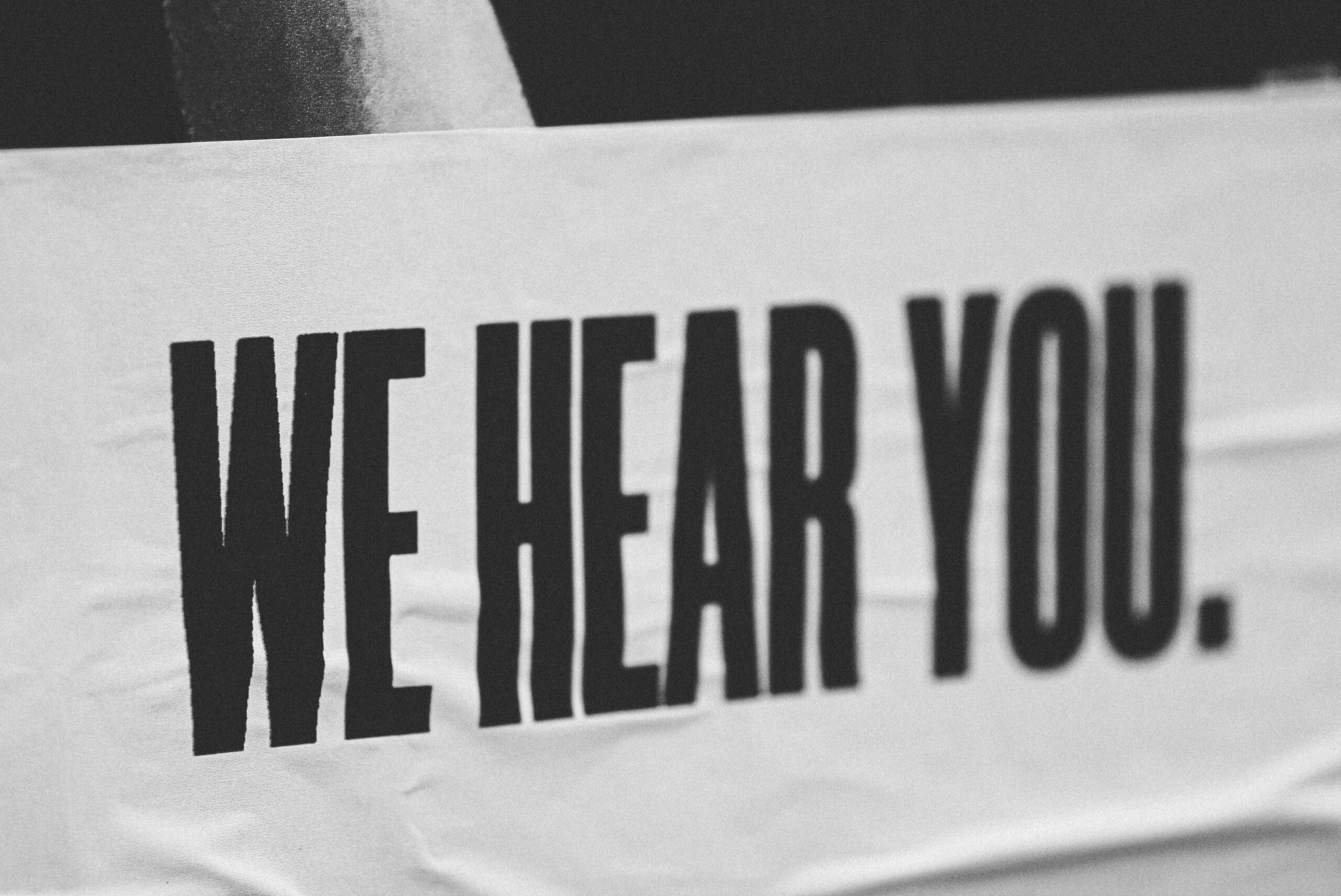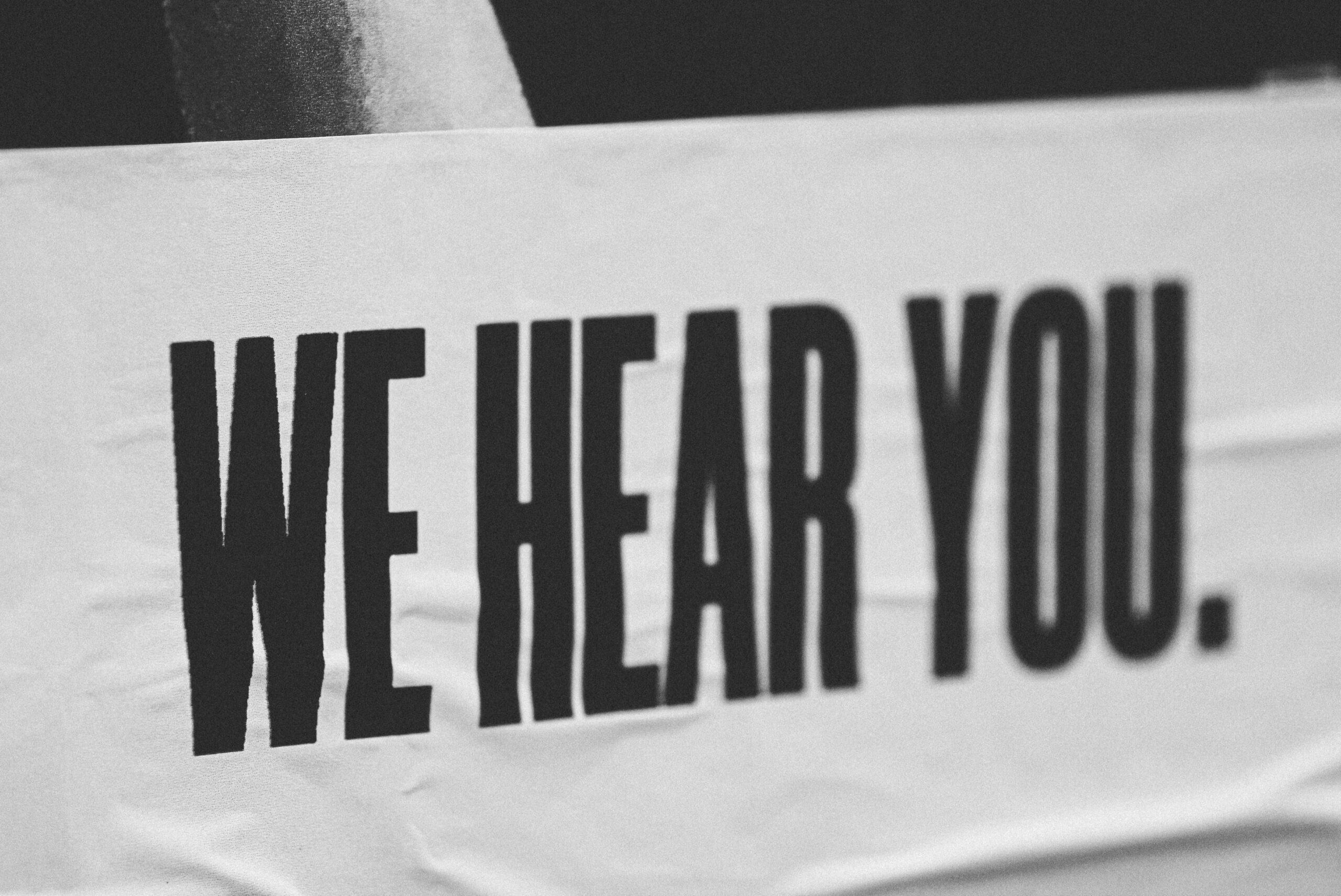
Communication, Leadership
The doing versus the being of listening. There are no shortcuts if you really want to connect with people.
“My boss says all the time now, ‘I hear you,’ when I’m telling them something. But the problem is, do they really? It feels like they’ve been on a leadership course, and this is something that they’re trained to say. Is this the case? Is that what you’re teaching people these days?” I don’t blame her for being upset. When I hear things like this, I want to bang my head against a wall. It’s a perfect example of hearing something in a leadership class, and then applying it on autopilot as a box tick exercise. People aren’t stupid, and they can always smell when someone isn’t being authentic and is just going through the motions. I’ll just say the things they tell me to say. And that will get the result I want. Wrong. Leadership skills aren’t meant to be a crash course in manipulation. And even though I often say leadership is more about who you are being than what you are doing, there are still so many folks who show up to a course looking for a quick tip or trick that will miraculously transform a relationship without putting in the hard work. The doing versus the being of listening Let me explain what I mean by doing and being. Doing – is about developing leadership skills and practising them until they form new habits. It takes persistence, practice, and hard work. These could be skills pertaining to having feedback conversations, listening skills, performance conversations, delegating tasks, coaching, giving presentations, time management. These are some of the skills related to successful leadership and we must practice them, as the more we practice the more leadership competency we build. Practice makes better. Being – is a journey of leadership self-exploration. When we are more self-aware and accessing our Learner Mindset we can manage our well-being, build stronger relationships, innovate, and deliver higher performance levels. Being is about how you are showing up. Are you just going through the motions, or do you really care about your employees, the team, and the work product? If you value things like integrity, is that visible to others in our behaviour? Would others describe you as a person with a high degree of integrity? The question I often ask leaders to explore this aspect of beingness is “Why on earth would anyone follow you?” It’s meant to be provocative, because there is often a disconnect between how we want to be perceived and how our beingness is landing with others. So back to my participant’s question. One of the skills that I often illustrate is acknowledging and validating what you’re hearing another person say. That goes way beyond parroting a phrase like, “I hear you.” Here’s what I said to that participant: “It sounds to me that you’re frustrated. And it makes perfect sense that you would be because I’m hearing that authenticity is important to you. You wonder whether your boss is paying attention, or just parroting something they’ve been told
September 14, 2023
|
4.1 min read

Leadership
How to Set Boundaries at Work part 2 – The Art of Letting Others Sit in Their S#it
When I think about my own journey, whether it pertains to life or leadership, boundaries are one of the things I’ve probably struggled with the most. Boundaries with friends, boundaries with family, boundaries with colleagues. The problem with human relationships is that they often trigger reactivity in ourselves, especially if we let our buttons get pushed. And when our buttons get pushed we often lose control of our boundaries. And we all have buttons. The more aware of what they are, the better off we can be at managing them and our boundaries. There’s a lot of talk at the moment in popular culture about setting boundaries. Telling people what’s up, how they need to show up with you, be with you, work with you. There’s a lot of emphasis on having feedback conversations to clarify firm lines and if someone God forbid crosses the line, we’re encouraged to label this person as toxic and eject them from our lives. That is one strategy. And in certain situations, it could be the appropriate one. But in my experience if you follow the above a bit too rigorously, you’re going to end up a very lonely person who has managed to alienate just about every single person from your life. Setting boundaries doesn’t have to look so black and white. I’ll give you an example of something that happened to me this week. Silence Can Be a Boundary’s Best Friend A colleague asked for 45 minutes of my time to prepare for an upcoming delivery that we’re co-facilitating together. I don’t know this individual very well and had never worked with her before. I show up to the call on time, as I always do, given that being on time is something I value and something my clients know me for. I login to the zoom and am let into the room, where I hear my colleague speaking on another call and hear other voices as well as hers. She pops a message into the chat – “on another call, be with you in a bit.” Now, at this point I’m livid. She didn’t even think to mute the call she’s already on, so I can hear what’s being discussed. And she’s expecting me to just sit there and wait. Rude and disrespectful are two descriptors that instantly popped into my head. I thought about what I wanted to do. I decided to exit out of the zoom call. I waited a few minutes, sent a few emails, and then popped back in. She finished up quickly after I returned into the room and our call commenced about 8 minutes late. “Apologies Shelley – but it was a call with a potential new client to facilitate something. You’re freelance too, I’m sure you know how it goes.” Cue the awkward silence. I sat there and looked at her on the screen, and then I changed the subject. I didn’t agree with her, I didn’t disagree with her. And it shook her
September 7, 2023
|
4.7 min read

Emotional Intelligence, Leadership
A quick tip for maintaining your leadership presence: How to manage emotions under pressure
One of my participants asked the most brilliant question on a leadership training this week. We were talking about the importance of managing your emotional intelligence as a leader, which is so critical considering it’s the leader that sets the tone of a team. To the extent that the leader of a team shows up as frustrated or anxious, it creates a multiplier effect that spills over onto everyone else, and the problem is that your team isn’t going to do their best work in an environment like that. “I know it’s important to reflect. Meditation and journaling are helpful. Exercise is helpful. Sleep is important I know. But what do I do if say I’m in a meeting, and it’s tense. And I find my emotions getting triggered. Let’s say I get angry because the person I’m dealing with is inflexible and difficult. What can I do to manage my emotions then?” I love this question. And it brings up a great point. A lot of the stress management and emotional management techniques out there are aimed at what I call maintenance. Establishing healthy practices that enhance our overall quality of emotional well-being. And these are fantastic as they greatly reduce the overall probability that we will get triggered at an inopportune time. But we all have a bad day. We all have a bad moment. We’re human after all, and the human experience is full of emotions, some on the positive side, some on the painful and so called “negative” side. That’s the inherent duality of life. And no matter how subtle our reaction to something that triggers us, it still triggers us. Maybe we don’t say what we would really like to say or what we’re thinking in the moment – I’m scared, You’re wasting my time, You’re an idiot, I’m an idiot, This is stupid, but it still affects us and the quality of the interaction we are engaged in. We tense up, they tense up. We tune out, they tune out. Energetically something is going on, something is not being said, but tension hangs in the air, and you could cut it with a knife. So back to the amazing question. What do I do? The following practice is one that could be helpful. You can use aspects of it in the moment if you find yourself in a pinch, maybe you just utilize the pause step at that critical moment when you’re really triggered and you can also utilize it as a diagnostic tool to help build awareness. How to manage emotions in a difficult situation – a 3 step process Pause – Take a couple of deep breaths. If you’re in a meeting no one has to know. If it’s appropriate you might excuse yourself for a minute or two. Then ask yourself a question or two: Whatever the feeling is, it’s valid. Just acknowledge it. There’s no need to blame or shame yourself for feeling whatever is coming up. You might tell
April 13, 2023
|
4.8 min read

Communication, Emotional Intelligence, Leadership
The (more subtle than we realize) Art of Listening
Recently I was helping facilitate a program on coaching for leaders, and on day 1 we spent quite a bit on time on the subject of listening. You may wonder why, considering it’s something we do every day and most of us think we’re more than competent when it comes to this skill. Think again. “This is hard!” “I keep wanting to butt in and offer my thoughts or advice.” I so appreciated the honesty and vulnerability from the participants. The bottom line is that most of us are average at best when it comes to this skill. And the problem is if you’re a leader looking to inspire and motivate your team to greatness, average just won’t cut it. This reminds me of a story from many years ago. I was speaking with someone who was known in the organization I was working for at the time to be a great leader. A fantastic reputation, the kind of person people sought out to join their team. So I asked this individual, what’s your secret. I was expecting something magnanimous, something I’d never thought of before. Some simple but not easy advice on listening The response caught me by surprise. “I give whatever or whomever is in front of me 100% of my attention.” I was underwhelmed to say the least. But they were really on to something. Because the reality of how we show up is often quite different. Let’s take the following scenario: Someone pokes their head in your office – “Do you have a minute?” They ask. “Sure!” you say, wanting to sound interested and helpful. You’re the boss that cares. You’re approachable. People like you. They walk in and your eyes are still on the email you were in the middle of writing. Your thoughts are still halfway consumed by it. You’re unaware you’re doing this. You’re halfway listening to what they’re expressing. You’re nodding your head in agreement, eager to get back to your draft. They leave and you carry on, you barely notice the interaction and later you forget all about it until they awkwardly remind you of what you’d agreed to in that moment. Listening isn’t an innate thing we can take for granted. It’s a skill. And just like any skill there is a methodology to it and we must practice it. The levels of Listening Level 1 – Halfway listening. In the previous example the manager I mentioned was listening at the equivalent of level 1. They’re halfway there, they’re caught up in their head in something else. They really didn’t have the time for the interaction but instead of setting a boundary and asking the person to please come back later, they acquiesce. The result is they’re not present, they’re not tuned in, and the person on the receiving end of the conversation knows it. The employee with the question leaves disengaged and slightly annoyed. People know when they’re not being listened to. Another version of level 1 is what
March 16, 2023
|
5.4 min read

Communication, Leadership
Silence Really Is Golden
Yesterday I was teaching a leadership class, and we got into an interesting conversation about zoom, and given the fact that so much happens in the virtual world now the question was: How do you effectively engage with people in a virtual environment and create meaningful connection? My leaders were voicing their frustrations about the lack of “real” connection in the virtual world, and how you get team members who are on the quieter side to speak up, to participate, to engage, particularly in a group setting. “I’m often looking at a screen of black boxes with people’s names. I ask if there are any questions when I’m finished sharing my thoughts, and it’s just crickets. And then I just move on to the next item.” The scary sound of silence The dreaded sound of silence. The awkwardness of it. I remember when I first started facilitating, I was afraid of it. What if I ask a question and it doesn’t land? What if the participants aren’t getting it? What if they think I’m a fool who has no idea what she’s talking about? When I first started out, I tended to rush through the content, because awkward silence was scary. I would fill it with my worst fears about my performance. I would imagine folks were thinking horrible things about me, the material, or the learning experience. I was afraid of silence. And to be frank, I think most people are. We’re not used to silence We live in a busy world, full of notifications, full of ims and dings and the next thread on slack to respond to. It’s not often you hear silence . I doubt we’re even used to it anymore. There’s often a tv playing in the background in the airport, the radio or podcast we listen to in the car, even in my old office in Houston CNN was always running on the monitor in the background. Noise is everywhere. Silence is a gift And then another participant in my class shared something interesting. “You know, my manager brought me in the other day to facilitate a team session for a group that he warned me in advance was often quiet. He told me they probably wouldn’t have any questions. They wouldn’t engage. So I thought hard about how to approach them to get a different result. I started off the session slowly and methodically and told them that I’m comfortable with silence. I’m not in a rush, we can take all the time we need for this experience. And then I sat back and patiently waited. And the questions kept coming, 8 in total, when they’ve never asked one before.” The story didn’t surprise me. Probably the hardest thing for me to learn over the years as a facilitator of learning was to embrace silence. To learn to love it, and to use it like Erika did in this story effectively. Because the truth of the matter is, there is magic in silence
October 28, 2022
|
4.2 min read

Authenticity, Emotional Intelligence, Leadership
Feeling is freeing: How to Practice Emotional Intelligence
For years and years, I would have told you that I was a very emotionally intelligent person. I was aware that emotions could take many forms, had many names and I knew intellectually it was important to understand them. Emotional intelligence has been a notable topic for many years, and I considered myself to be one of those wise people who were in the know. Unfortunately, in all of my information gathering on the topic, I ignored one crucial point. That in order to have emotional intelligence you actually have to experience emotions. Who would have thought? The key to emotional intelligence is to not just identify the emotion we are experiencing with a handy dandy robust emotional vocabulary, but to allow ourselves to feel it non-judgmentally. This is a key point, because many of us who grew up in households where emotions were not welcome got used to shoving them down and pretending they didn’t exist. Feeling is freeing When we suppress emotions, it typically doesn’t lead to much good. We end up accumulating hurt on top of hurt and over time these feelings build up until one day we can’t shove them down any longer, and the long-awaited bomb finally erupts. Or we can try to numb them out with the help of food, booze, shopping, video game playing or any other addictive habit we have accumulated over the years. Not a recipe for success either. We often try to squash the negative emotions. The ones we consider to be “bad” like anger, frustration, sadness, guilt, shame (my personal favorite), disgust, overwhelm, anxiety, fear. We’re often not super aware of the oh so subtle tricks we’ve accumulated over the years for disowning these things in ourselves. I feel anxiety before delivering a leadership development program, particularly a new one. Perfectly reasonable, right? And yet, in my head I’m thinking to myself, “Bad Shelley. You shouldn’t be feeling that. You’re only feeling that because you’re a bad teacher and facilitator. If you were better at your job, you’d be more confident and you’d never experience this.” So the anxiety comes up, and I try to swat it down by directing anger at myself for having the emotion in the first place. Or perhaps I’m frustrated or angry at a family member. “Bad Shelley. You shouldn’t be feeling that. You’re only feeling that because you’re a bad niece, sister, cousin, etc. If you were a better person, you would be more caring and emphatic and understand their perspective and where they were coming from.” Here is the mental leap that often eludes us: having and especially feeling an emotion does not make a person “bad.” What matters at the end of the day is what we do with the emotion we’re having. I can be angry and resentful inside and yet I can still manage to put that aside and recognize in the moment exhibiting that behavior would not be helpful. I can choose my response. I feel the way
August 18, 2022
|
4.5 min read
communication skills
Shelley Pernot, otherwise known as the Irreverent Guru of Mindfulness, muses on life, leadership and everything in between. Your one stop shop for career tips, leadership tips and daily inspiration!

It was a privilege to work with Shelley as my leadership coach! The process was structured and yet flexible enough to meet needs as they arose. Shelley helped me to grow, learn more about myself, and to really achieve what I set out to accomplish. We worked on planning, navigating a promotion successfully, and so much more! I experienced many successes as a result of working with Shelley, she has great resources, knowledge, and really helps with setting the foundation to this coaching work. She won’t let you down!
Stacy Campos
Regional Coordinator
Having the opportunity to have Shelley as my Leadership Coach could not have come at a better time in my career. I was recently promoted to CFO and was new to the Senior Management Team. Shelley helped me navigate joining the team as well as helped me to determine who I wanted to be as a leader. The Leadership Circle Profile helped our team to discover our blinds spots and to be able to understand each other better. Working with Shelley not only has affected my professional life in a positive way, but also my personal life. She helped me take leaps and has given me the resources to continue this journey of self-improvement. If you’re looking to find more about yourself and how you can be the best version of yourself, I highly recommend working with Shelley.
Kristen Spedale
CFO
I have been working with Shelley for the past 2 years on my leadership development journey. What I thought would be a straight line, I soon learned with Shelley’s guidance, was a winding path with several ups and downs along the way. Shelley supported me as I took a deep dive into my professional and personal history and learned how it affects my approach and my perceptions. She helped me to slow down and recognize certain behaviors and understand that I can pivot in the moment or try again next time. Ultimately, my work with Shelley turned out to be so much more than what I expected. Her approach to coaching was exactly what I needed.
Nicole Naassan
Senior Vice President, Consulting
I’ve learned more about leadership in the past six months working with Shelley than I have in my 10+ year career. She is an incredible coach with many tools in her toolbox. The guidance and mentorship I’ve received from Shelley has been life-changing. She will challenge your limiting beliefs and inspire new ways of thinking.
Margaret Soltis
Creative Director
I highly recommend Shelley if you need a coach, thought partner, and guide as you consider the next steps in your career. She provides practical tools and advice to help launch your career exploration, but most importantly, she is an expert at helping you cut through the noise of your limiting beliefs. At the end of our time together, I had a much clearer vision of what I wanted in my life and a plan to make it happen. My only regret is that I didn’t find her sooner!
Elizabeth Magnus
My career coaching sessions with Shelley have brought me back to living. It’s been contagious, spreading throughout my personal and professional life. I now have the building blocks I need to continue setting healthy boundaries, the freedom to show up as my authentic self, and an adaption of a growth mindset that has allowed me to make bold decisions and try new things. I’ve discovered that there’s always another way and how to eradicate barriers that lead to tunnel vision. These sessions with Shelley have been a great gift and have given me the momentum I need to continue the journey to be my best self.
Teasha Houston
Art Director
It is amazing to think where I was only 10 months ago when I first started working with Shelley and where I am now. Not only professionally but mentally and emotionally. Shelley helped me navigate out of an unhealthy work environment by challenging me and asking me those tough questions we never seem to ask ourselves. What are the values of a true leader? How do those values align with my own? Shelley challenging me and guiding me through some of those tough questions is what led to my epiphany and me having the courage and confidence to leave an environment that threatened my well-being. She taught me how to become more self-aware and self-compassionate. Reminded me to be kind even when the world would understand if I did otherwise. And the biggest one for me, shutting down that crazy inner voice (we all have it!) and replacing it with being present. Shelley has armed me with tools that I will carry with me for a lifetime. Tools that will help me to continue to grow and learn. Life can be hard but working with someone like Shelley does make it easier. She will help you navigate the good and the bad and you’ll learn so much about yourself in the process.
Michele Feria
Director of Marketing
First of all I would like to say that I would recommend Shelley to anyone needing career guidance. As my counselor Shelley helped me transition my career from bartending to Tech Sales which was a difficult and scary transition for me. From the start Shelley was fantastic. Initially I had no idea of which direction I wanted my career to go, I just knew I wanted it to go somewhere else. Shelley was so kind and patient as she helped me figure this out, and gave me a step by step guide on how to explore my options and make an educated decision. She also helped me assess my skill set which played a large part in directing my energy. I landed a great job within days of my final session with Shelley, and now I’m month 3 I am absolutely loving it and doing very well. It was the perfect job for me and Shelley was the one that got me there. Working with Shelley was one of the best decisions I have ever made, she literally changed my life and I am so much happier for it.
Russell Boxer
Account Executive
